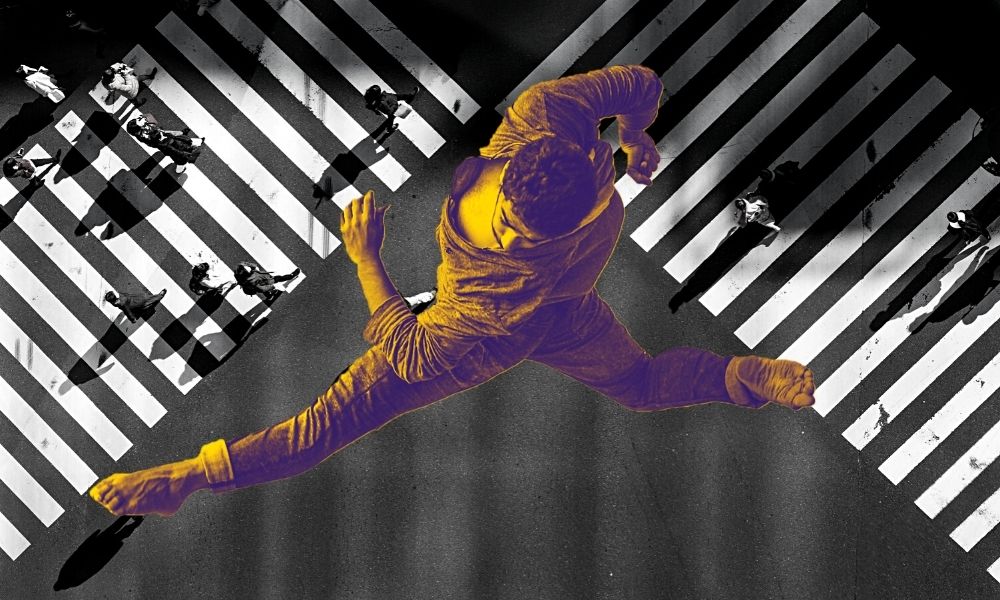
In this post, part of the Learning & Teaching Enhancement theme: “Focus on the internationalisation of teaching and learning“, Mark Pace, Teaching Fellow – Dance Science & Education, writes how his own international background informs his teaching practice and how working with an international cohort of dance students offers possibilities to learn, understand, and appreciate each others differences while also bringing students together with its artistic communication and expression of themes, issues, ideas, or feelings through movement…
This blog post discusses how my international background frames my teaching practice and personal and professional development. I come from Moe (deriving from a Kurnai local Indigenous word meaning “swampland”), a small rural town in Victoria, Australia. A large proportion of the population is descended from immigrants who moved to Australia after the 2nd World War, including Dutch, Italian, Greek, Irish, Yugoslavian [1] and Maltese. My father was a Maltese immigrant, and my mother was born in Australia with Irish/Scottish heritage.
My upbringing was international, with different cultures and languages surrounding me. My childhood education was in a Missionary Primary School, where the student populace mirrored the city’s multicultural population.
I am a dance artist and a gay man. Coming to Edinburgh, I bring my own lived experiences, from living and working in several countries (Australia, Switzerland, Germany, France, China, Vietnam and Scotland) into my teaching practice.
At Moray House School of Education and Sport (MHSES), I teach on the MSc Dance Science and Education (MSc DSE) programme, Postgraduate Diploma of Education (PGDE) and MA in Physical Education (MAPE) programmes and within each brings a different population and challenges. Teaching at the University at MHSES, with its vast international population, makes each programme unique. Like dance, it brings people together from all over the world, with the aim of learning and learning from each other.
With Dr Wendy Timmons as Programme director, the MSc DSE cohort has come from Scotland, England, China, USA, Germany, Finland, Haiti, Congo, Israel, Belgium, and others. Each brings a different culture and dance discipline (e.g., Pole dancing, Tibetan folk dance, Chinese Classical dance, Chine Acrobatic dance, ballet, contemporary and African dance), making the cohort learn from each other and pushing us as educators. Of course, it comes with its difficulties (e.g., languages, homesickness). Now teaching remotely has brought additional challenges, such as supervising students through the dissertation process, due to not having access to the lab dance studios, consequently making dissertations desk-based. However, being an international cohort brings a sense of unity and possibilities. It has enabled us to introduce the cohort to people we would not have invited before due to different geographic locations. Last semester, Katrina Edwards, Student Development Coordinator & Conditioning Specialist from The Australian Ballet School (ABS), gave a Pilates session and discussed her role at the ABS. She was in Melbourne, while the cohort was in the UK, China, USA and Europe. Last year in April, Lucy Nightingale, talked to the cohort from Lausanne about inclusion and teaching dance to the visually impaired. The advantages of being able to connect online means that even when possible to meet in person, we will continue to have remote sessions, as it enables us to bring our students closer to the international dance community
By having an international cohort, who often arrive at the University with a wealth of teaching experience, with my colleague, Dr Timmons, we aim to share through dance this wealth of expertise and diverse cultures across the school. Within the Institute of Sport, Physical Education and Health Sciences (ISPEHS), the MAPE cohort is mainly local students. Consequently, the student experience differs from the MSc DSE students, making it vital that our young PE students have that international experience in their teaching practice. In the past, the students have collaborated learning African Dance, Hip Hop, Chinese folk dance, Lindy hop, Ballroom and Line Dancing. Some workshops have been more successful, but, in general, it gives the MAPE students the experience of working together, making it a valuable experience considering they will go to teach in schools that are often multicultural and gender-inclusive.
While each culture has its language and customs, dance brings us together because of its artistic communication and expression of themes, issues, ideas, or feelings through movement. It is universal and helps us learn, understand, and appreciate our differences and work towards a society of equality, diversity, and inclusion. To echo Newton, the aim is to build bridges, not walls.
[1] now separated into six countries: Slovenia, Croatia, Bosnia and Herzegovina, North Macedonia, Serbia, and Montenegro) Mark Pace
Mark Pace
Mark a professional dancer for 21 years, then dance teacher, and now academic and dance scientist, currently teaching at the University of Edinburgh on the MSc in Dance Science and Education programme.
Links to professional profile
- https://www.ed.ac.uk/profile/mark-pace
- https://www.linkedin.com/in/mark-pacemsc/
- https://themaledancer.libsyn.com/2019/08
Twitter: @yallourndancrs Instagram: yallourdnce

